Research Results
Preparing for water-related disasters through observation and forecast technologies
Contribution to flood control and water usage policies in ThailandFY2020
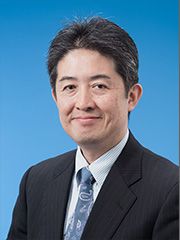
- Oki Taikan(Professor, Institute of Industrial Science, The University of Tokyo)
- SATREPS
- Environment/Energy (Climate change), “Integrated Study Project on Hydro-Meteorological Prediction and Adaptation to Climate Change in Thailand (IMPAC-T)” Principal Investigator (2008-2013)
Environment/Energy (Global-scale environmental issues), “Advancing Co-design of Integrated Strategies with Adaptation to Climate Change” Principal Investigator (2015-2020)
Research results to be introduced into environmental policies in Thailand
Professor Oki Taikan, a principal investigator of the Strategic International Collaborative Research Program – Science and Technology Research Partnership for Sustainable Development (SATREPS), and his coworkers, are conducting an international joint research to create a climate change adaptation strategy with Kasetsart University of Thailand. The present project, which began in 2016, has been tackling academic research activities in the three areas, “building of the basic information for meteorology and hydrology,” “assessment of adaptation opportunities and their impact,” and “development of methods to co-design adaptation strategies.”
The project duration is five years, and the report for the Thai government is to be prepared in the final year. In 2018, the third year of the project, Professor Oki and his coworkers presented a special report on the progress following discussions with the Office of Natural Resources and Environmental Policy and Planning (ONEP), the Ministry of Natural Resources Environment (MONRE), organizations that implement adaptation strategies, and university staff to incorporate the results of the study into the “National Adaptation Plan (NAP)” formulated by the Thai government. As a result of preparing and publishing the special report in English and Thai, the chief of ONEP showed appreciation at the NAP hearing held by ONEP in September 2018, as the research results of the project were widely shared among the central Thai government.
Professor Oki and his coworkers planned a special session at the THA 2019 International Conference on Water Management and Climate Change towards Asia's Water-Energy-Food Nexus and SDGs held in Bangkok in January 2019 and had an opportunity to discuss the research results of this project. They introduced the results leading to social implementation to government personnel. As a result, there is much anticipation for the “report for the government” to be prepared in the final year.
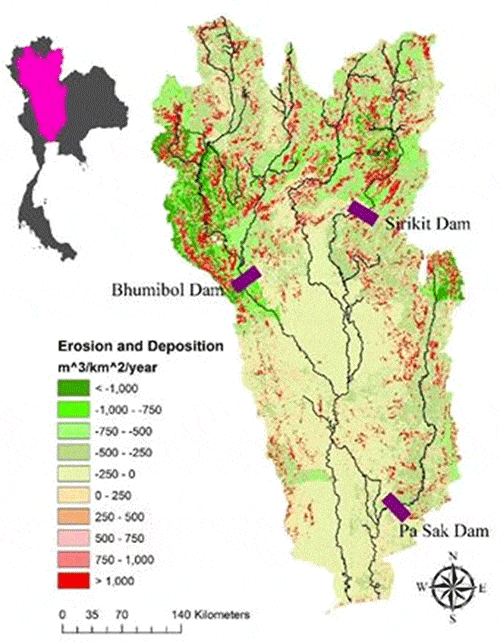
Figure 1. The map of annual erosions and depositions for the Chao Phraya River. Based on such information, we analyzed not only the natural environment but the socioeconomic situation as well. Specifically, by comparing the cost for dredging of sediments in river channels, which contributes to reduction of flood risk, and market value as construction materials, this project provides information that can be used to develop adaptation strategies or policy decisions (Rangsiwanichpong P et al. (2018)).*
* Rangsiwanichpong P, Kazama S, Gunawardhana L. Assessment of sediment yield in Thailand using revised universal soil loss equation and geographic information system techniques. River Res Applic. 2018; 1–10. https://doi.org/10.1002/rra.3351
Development of adaptation strategies to climate change risks in a wide range of fields
Approximately 30% of Thai’s citizens work in agriculture or fishery; thus, suppressing the impact of climate change on agriculture is an important challenge, and the Thai government has high hopes for the joint research conducted with Professor Oki. As the climate change progresses, natural disasters such as droughts, floods caused by torrential rain, and landslides are occurring around the world. There was a major flood of the Chao Phraya River in Thailand in 2011, which caused damage to hundreds of Japanese companies as well. Such floods incidences are likely to increase, and risks are likely to increase each year as well.
Professor Oki and his coworkers created adaptation strategies through interdisciplinary study and implemented the same for various flood management observation and forecast technologies to reduce such flood risks. They have been working toward distributing the results into neighboring countries. The content of the research is diverse and includes, the development of a software aimed at the practical operation of an integrated system for water cycle information, development of methods to forecast seasonal precipitation in Thailand based on a general circulation model, development of a method to select the appropriate reservoir operation for Chao Phraya River, development of a method to forecast heavy rains that combines general circulation models and past climate patterns during heavy rains, development of risk maps for landslides, cost benefit analysis of dredging sediments in river channels, calculation of cost to maintain beaches along the shoreline, and creation of calculation methods for impacts on tourism.
As such, this project aims to create adaptation strategies that can maximize societal benefits through conversation with citizens by combining diverse adaptation strategies, such as early warning information that was developed by combining earth observation and numerical simulation technology, guidance for appropriate land use, and changes in the regulations of reservoir operation.
Flood risks are also high for other countries in Southeast Asia. The development of technologies to create integrated adaptation strategies, development of methods to co-create adaptation strategies, and development of human resources in the fields of adaptation will lead to measures that can be applied to other countries in addition to smoothly creating climate change countermeasures in Thailand.
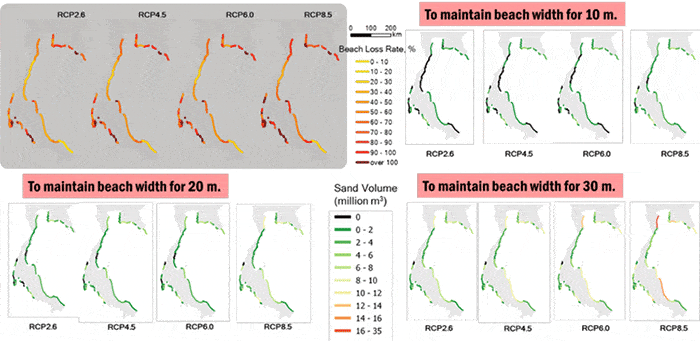
Figure 2. The amount of beach erosion expected by the end of this century, and sand volume necessary to maintain the beach width of 10 m, 20 m, and 30 m. Based on this result, we calculated that $1.06 billion and $3.19 billion are necessary to maintain 10 m of beach width for the best scenario (RCP 2.6) and the worst scenario (RCP 8.5) of representative concentration pathways (RCP), respectively (Somphong C et al. (2018) and Ritphring S et al. (2018)). *
* Somphong C, Udo K, Ritphring S, Shirakawa H, Kazama S. Adaptation assessment to future beach loss due to sea level rise in Thailand. Coastal Engineering Proceedings. 2018; 1(36), risk.13. https://doi.org/10.9753/icce.v36.risk.13
* Ritphring S, Somphong C, Udo K, Kazama S. Projections of future beach loss due to sea-level rise for sandy beaches along Thailand’s coastlines. Journal of Coastal Research. 2018; 85(SI), 16-20. https://doi.org/10.2112/SI85-109.1
Workshops with municipalities and citizens toward social implementation
Flood and water use policies cannot be promoted solely based on science and technology. Land use plans to reduce flood damage and revisions to operational rules for reservoirs must be also included. For example, when examining the major flood of 2011, the simulation result showed that if the operational guidelines for the dam focused on reduction of flood damage, the damage could have been reduced drastically. However, the reduction of flood damage and maintaining of a stable supply of water resources are in conflict in terms of reservoir operation; thus, the value of each can only be determined by holding discussions with the government and citizens.
Thus, in 2018, Professor Oki and his coworkers held community workshops in multiple sectors as an effort toward social implementation. At the workshop held in Khon Kaen Province in northeastern Thailand with the Thai Meteorological Department and the agricultural sector team, opinions were exchanged on the impact of climate change on agriculture, adaptation plans, and use of climate information with central and regional government, local residents (farmers), and university staff. The team for assessing adaptation opportunities and their effects in the forestry sector discussed the impact of economic fluctuations and climate change on society while reviewing the precipitation observation results on the topic of precipitation measurement and basin management to adapt to climate change in the Mae Cham River basin in northern Thailand. In addition, we held workshops in Phitsanulok Province in northern Thailand and the capital city, Bangkok, in order to deepen understanding between diverse stakeholders.
In July 2018, we held an international symposium “Front line of counter measures to climate change in Thailand — Will a massive flood occur again?! —” in Japan at United Nations University and provided the latest knowledge to society and information to Japanese companies in Thailand.
-
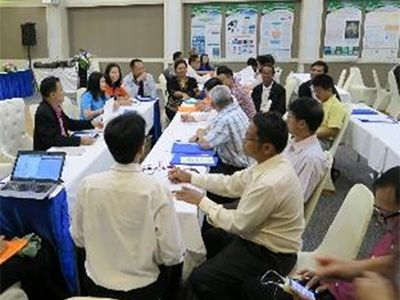
Figure 3. Community workshop on the use of climate information held in Khon Kaen Province, northeastern Thailand.
-
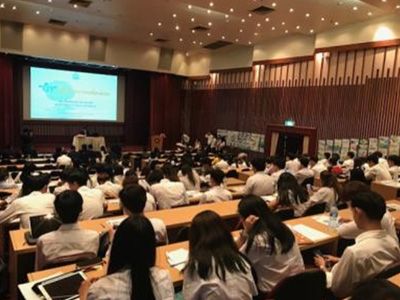
Figure 4. Community workshop to discuss adaptation strategies in Bangkok.
Development of adaptation strategies and technology transfer to Thailand
Presently, Professor Oki and his coworkers are holding discussions with ONEP to contribute to the formulation of the national adaptation plan guidelines. They are holding symposiums and training for ONEP, and promoting enhancement of ONEP tasks on climate change management through presentation of adaptation options that can be selected in major sectors and using portfolios.
As for technology transfer, a number of the 17 research topics have been completed while some are in progress. In the future, they will work on the development of various assessment methods that suit the current situation of Thailand, assessment of changes in the damage based on the different simulation conditions, and development/examination of effective adaptation strategies. In this manner, we will attempt technology transfer to Thailand while maintaining close communication.
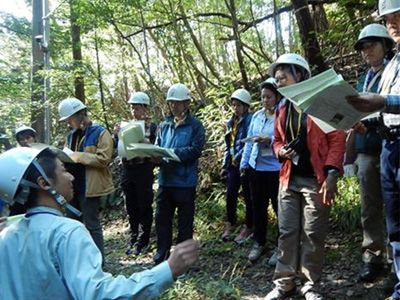
Figure 5. With participants from Kasetsart University, the Department of National Park, Wildlife and Plant Conservation, and the Department of Water Resources, we offered training for technology transfer at Ecohydrology Research Institute, the University of Tokyo Forests.
- Environment and Energy
- Research Results
- Japanese
